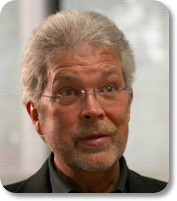 There has never been a better time for CIOs and their IT organizations to be the strategic partner that drives sustainable business results. The opportunities are enormous. Making the organizational changes necessary to take advantage of those opportunities? That's the hard part.
There has never been a better time for CIOs and their IT organizations to be the strategic partner that drives sustainable business results. The opportunities are enormous. Making the organizational changes necessary to take advantage of those opportunities? That's the hard part.
The challenge is to change the culture of your operation to be even more business and customer focused, responsive, and nimble.
Culture as Differentiator
Every company you compete against has about the same technology that you have. They pay about the same rates that you pay. And, the words on the flip charts at their strategic planning sessions are basically the same as the words in your sessions.
Your competitors don’t hire all the really smart people and leave you with the dunces. They aren’t running the latest and greatest technology while you are getting by on Commodore 64’s.
In a world where everything is basically similar, your culture is the point of differentiation that truly establishes you as the strategic partner with the business. If you want different long-term results, you must change the culture.
It sounds easy doesn’t it? Simply wave your hands, say a few magic business buzzwords, and “Presto, change-o!,” watch the culture change right before your eyes.
If only it were that easy.
Your culture is the DNA of your organization. It is your habits displayed over time. It is defined by the language that you use; the legends that you create; the symbols that describe what is important; and the values that permeate how you deliver your products and services.
Changing your culture isn’t like rolling out a new application or a hardware upgrade with defined start and completion dates. Culture change requires continuous attention and resources for a period of two to three years to really see a difference. And once you have your culture about where you want it to be, you must continue to pay attention to it. Your culture is a cruel mistress. Leave it alone, and it will show up at the absolute worst time to cause you grief.
4 Ideas for Changing Your Culture
- Change change. More specifically, change the way you think and talk about change. In nimble, responsive, and relevant organizations, change is an everyday component of getting better. It emanates from every level and not just from the top. And, it is driven by a desire to continuously make the services you provide faster, better, cheaper, and friendlier for those you serve.
- Generate creative tension to create urgency. People change for basically two reasons: a crisis or an opportunity pulls them to change. The same applies to organizations. Crisis works, but when everything becomes a crisis, then nothing becomes a crisis. The best long-term strategy for creating the urgency to change is creating a compelling opportunity. Think of the small child who spies a jar of Double Stuffed Oreo cookies on the refrigerator. You don’t have to encourage her to try different ways to get to it: climbing on the counter, pulling over a chair... She just hase to see the Oreos and the opportunity to reach them. On the other hand, it is a rare child who gets creative if the prize is brussel sprouts. So, what’s on top of your refrigerator?
- Use all the levers at your disposal. Create new habits by teaching new behavior, reinforcing desired performance, and establishing consequences for doing it wrong. You have any number of levers at your disposal to accomplish these: hiring, promotion, performance reviews, recognition and awards, work processes, communication vehicles. This list could go on and on, but you get the point. Culture change ultimately follows behavior and performance change – not the other way around. Use every lever at your disposal to accomplish that change.
- Lead the change, don’t manage it. Ross Perot, founder of EDS and Perot Systems, is noted for saying, “You manage data and things. You lead people.” That is especially true when it comes to change. Asking your staff to follow you on a journey that takes them out of their natural comfort zone requires trust. Earning that credibility requires that you articulate the vision and paint a clear picture of the differences between where you are and where you want to be. Most important, it requires you to model the change you want in every aspect of your performance.
Changing the culture to change the results sounds easy. The steps, in fact, are relatively simple. It is the discipline to stay with the work until it is done that takes courage and tenacity.

Written by Randy Pennington
Randy Pennington helps leaders deliver positive results in a world of accelerating change. He is a highly sought after resource for helping organizations prepare for their New Next™, and the author of several books, including Make Change Work.



